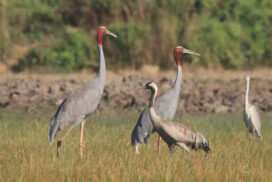In a nation deeply rooted in agriculture, the majority of its rural populace finds livelihoods in the cultivation of staples like paddy and other seasonal crops, catering to the ever-growing demands of consumers. Paddy, in particular, holds a significant role in shaping the daily consumption habits of the nation.
However, the present scenario finds the populace grappling with the harsh realities of escalating commodity prices in the domestic market, prompting them to explore various avenues to secure their survival. Among these commodities, rice takes the central stage, dictating the very essence of daily life for the people.
In a bid to alleviate the burden on consumers, the Myanmar Rice Federation has recently unveiled reference prices for trading paddy this year. These prices serve as a tool to strike a balance between the pricing of rice and paddy within the agricultural sector. Only when the prices of rice are effectively regulated can the daily expenses of the populace be curtailed, offering them a glimmer of respite.
Businesspersons and rice millers were urged to adhere to restrictions that ultimately serve the interests of the consumers. These price dynamics are contingent on the type and variety of paddy, and any fluctuations therein are bound to have a ripple effect on rice prices and, by extension, the daily expenditure of families.
It is imperative for those engaged in the paddy trade to cultivate empathy and consider the repercussions of manipulating paddy and rice prices. Such manipulations can burden consumers tremendously. MRF established a pricing framework for paddy based on quality, variety, and moisture content. This rationale dictates that paddy should be traded within the range of K1.3 million to K2 million per 100 baskets.
Under this framework, Ngasein/Aemahta paddy strains ought to be traded at K1.3 million to K1.5 million per 100 baskets, while paddy varieties from the Ayeyawady Region, such as Pyapon, Myaungmya, and Pathein, should be priced between K1.6 million to K1.8 million. Likewise, Ayeya Min paddy, Ayeya Padetha paddy, and Shwebo Pawsan are assigned pricing bands of K1.6 million to K1.8 million and K1.8 million to K2 million, respectively.
All paddy and rice traders need to prioritize compassion over self-interest when engaging in these transactions. Only by narrowing profit margins can consumers begin to breathe easier with regard to their daily food supplies. Thus, it is incumbent upon paddy and rice traders to foster a sense of consideration for the welfare of all, ensuring that the basic needs of the people remain accessible and affordable.














